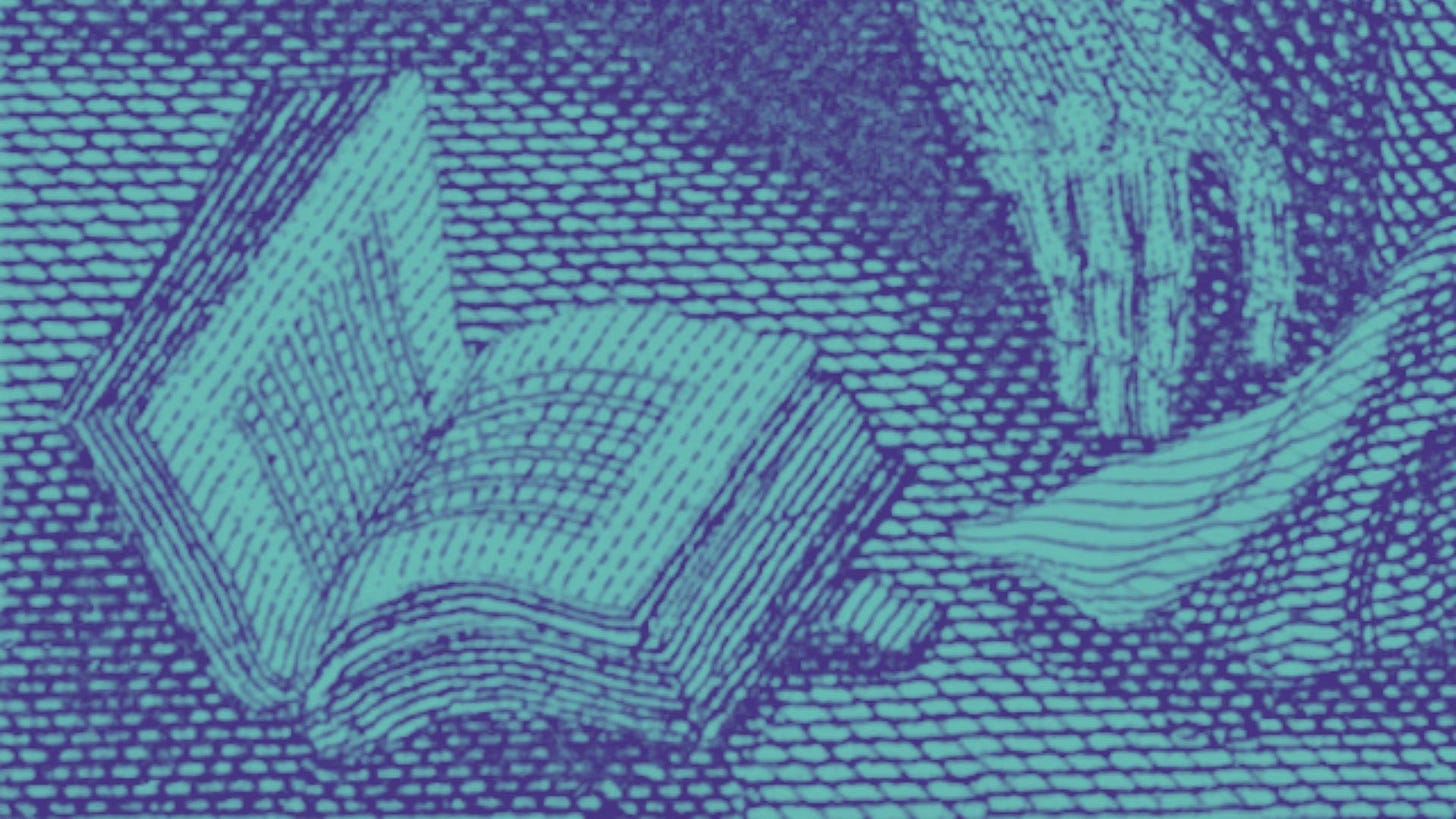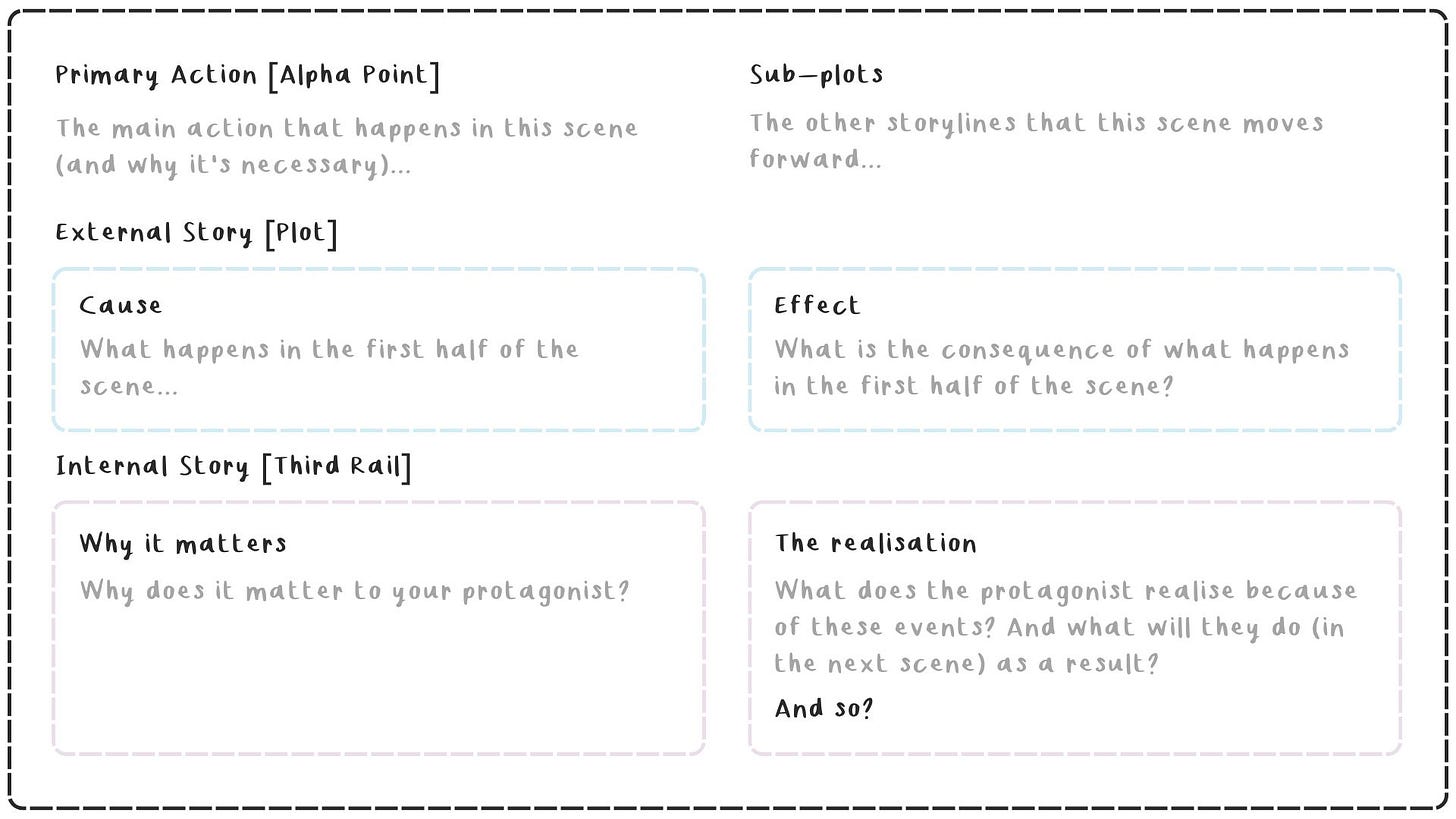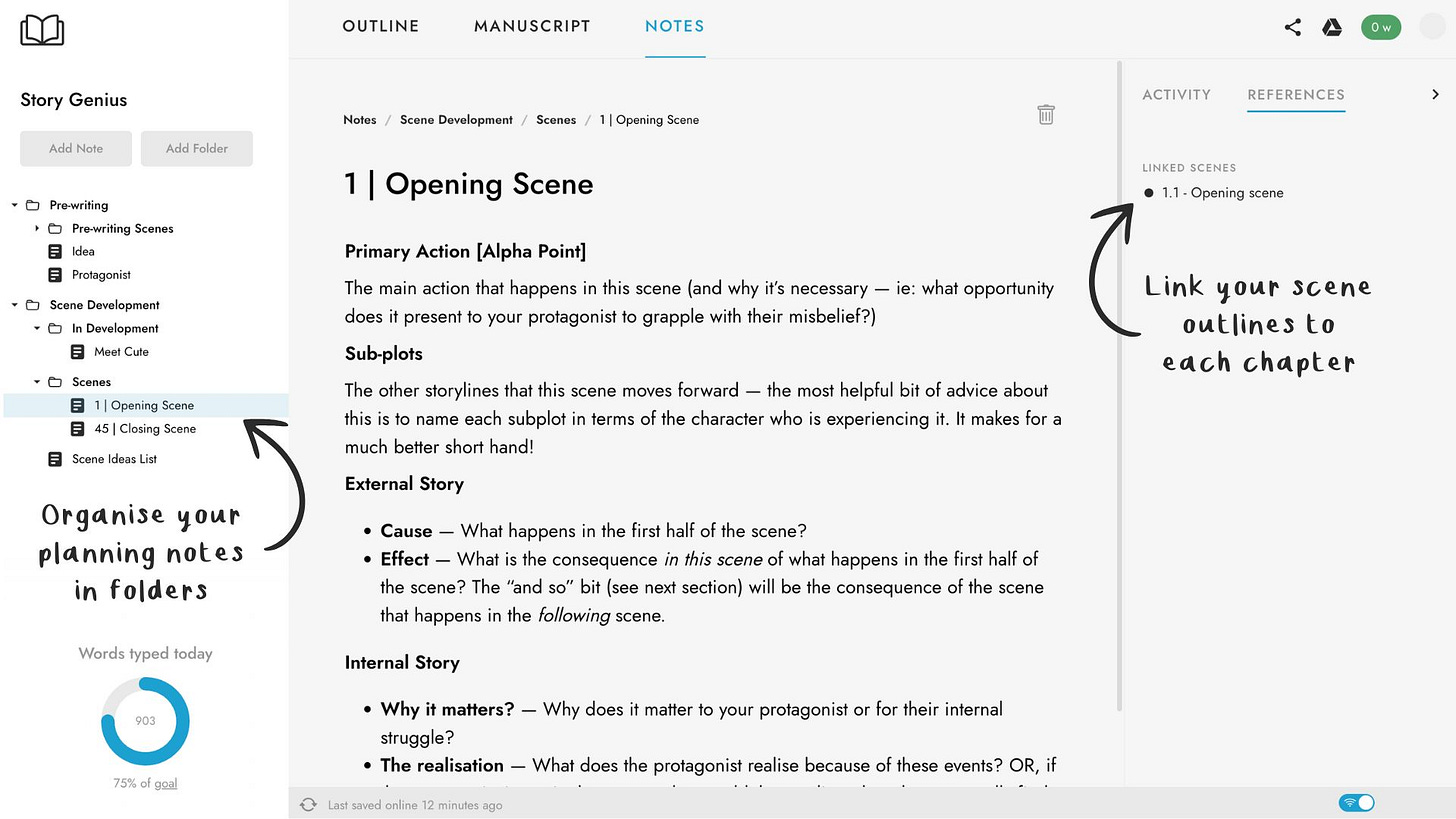A Story Genius outlining guide
A short guide to outlining a novel with the Story Genius method 🧩
Story Genius, by Lisa Cron, has been so crucial to my current re-write. It’s a particularly helpful book if you love (or struggle with) character development, because it unlocks a method for plotting that takes real care with the internal journey of the character — even if your plot is very externally driven.
But, while I found all the explanation and examples in Story Genius helpful while reading, when I got to applying the principles in the book, I found myself wishing there was a shorter guide that gave me the steps to follow without having to skim through all the other stuff to find the actionable bits.
If you felt like that too, I have good news! I made a pre-writing and outlining guide based on the Story Genius process as I was working through it. This is just my take on the process, and I’d love to hear if you apply anything differently or added anything to your process.
Pre-writing
Pre-writing is the preparation you’re doing to get your thinking to the point where you can begin to outline your story. There are two stages in pre-writing: (1) fleshing out your idea, and (2) defining your protagonist.
Fleshing out the idea
Before you do any plotting, the Story Genius method requires that you first nail down the point of your book. I found it hard to define the reason I wanted to tell the story, so instead I decided to think of it as the lesson that I want my protagonist to learn so that they can be the most Oprah version of themselves.
The way I see it, the “point” is essentially that mind expanding statement that your main character’s therapist would say to them that would crack their entire universe open.
Nailing your point
When did the idea first come to you? What was the first glimmer? [max 5 paragraphs]
Why do you care about this story? [max 5 paragraphs]
What is the point you're trying to make? What do you want readers to leave thinking about? [a few concise lines]
Writing the “What if”
Write out a 'what if' statement that includes:
Context — There’s a historical situation coming to bear on current events
Problem (Conflict) — Something has happened, and the protagonist must engage with it
Resolution (Consequences) — “But in order to do that…”
A hint of surprise — “Too late they realise that…”
Does this 'what if' help you make your point? OR: Will going though that scenario help your protagonist learn the lesson you want them to learn? Is it the best scenario to teach them that lesson?
Defining your protagonist
The goal is to define a protagonist who will help you make your point. In short, this means that they learn the lesson that your point teaches.
How do they change?
Re-write your 'point' as the lesson your protagonist learns by the end of the story.
Who are they before the story starts?
Now that you know what they need to learn, imagine them as far away from that lesson as you can — veritable newborn baby in relation to the point you're making.
Write a thumbnail sketch of who your character is (and why they are the way they are) the day before your story begins.
Why does your protagonist care?
What do they already what? What did they come into the story caring about? Be specific.
Why do they want it? What will it mean to them?
Go deeper: Why will that specific "want" satisfy that specific "why"?
What misbelief/fear is holding them back?
When did that misbelief first take root? [Origin Scene]
Next, you’ll write the scene from their past where their worldview changed forever, and gave rise to that misbelief. But first, prepare by answering 4 questions:
What does your protagonist go into the scene believing?
Why do they believe it?
What is their goal in the scene?
What does your protagonist expect will happen in this scene?
→ Write an origin scene in the first person.
How was that misbelief reinforced? [Crossroads Moments]
Once you’ve written an origin scene, pick three moments in the protagonist’s past that have contributed to that misbelief developing a bit more.
Each of these scenes make the protagonist believe her misbelief a bit harder. Her misbelief feels more true, and holding on to it makes her feel powerful/safe/whole in some way.
→ Write three “crossroads” scenes from the past that reinforce the misbelief.
Scene outlining
From this point of understanding your character, the thing they come into the story wanting [external object of desire], and the misbelief they’re struggling with [internal struggle], you can start to brainstorm scenes that might work for your story.
Story Genius provides a great scene-card structure for this (below), though some terminology, like “alpha point” and “third rail” were not specifically named enough for me. So, I renamed them according to what suits my brain best!
Other recommendations: Outline the opening scene and the ending scenes first, always outline a scene before writing a draft of it, write/draft in chapter/scene order, even if you outline out of order. I also use “atomic stories” to think about pacing in each scene.
Scene Cards
Primary Action [Alpha Point]
The main action that happens in this scene (and why it’s necessary — ie: what opportunity does it present to your protagonist to grapple with their misbelief?)
Sub-plots
The other storylines that this scene moves forward — the most helpful bit of advice about this is to name each subplot in terms of the character who is experiencing it. It makes for a much better short hand!
External Story
Cause — What happens in the first half of the scene?
Effect — What is the consequence in this scene of what happens in the first half of the scene? The “and so” bit (see next section) will be the consequence of the scene that happens in the following scene.
Internal Story
Why it matters? — Why does it matter to your protagonist or for their internal struggle?
The realisation — What does the protagonist realise because of these events? OR, if the protagonist is not in the scene, what would they realise when they eventually find out?
And so? — What will they do (in the next scene) as a result of this realisation?
How to set this up in First Draft Pro
Organise pre-writing & outline scenes in notes
Create a folder called “Pre-writing”, that contains two notes:
“Idea”
“Protagonist”
Create a sub-folder in “Pre-writing” called “Pre-story Scenes”, that contains four notes:
Origin Scene
Crossroads Scene 1
Crossroads Scene 2
Crossroads Scene 3
Create a folder called “Scene Development” with
A note called “Ideas List” for jotted down ideas
Sub-folders: “In Development” and “Scenes”
Link outlines in your manuscript
Link outlines to your manuscript and pin them in each chapter for easy reference while you’re drafting each scene.





